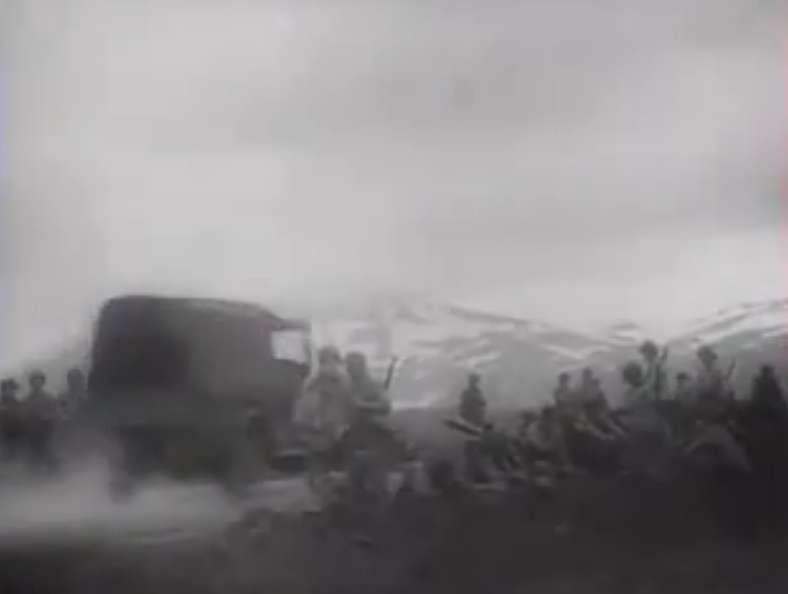U.S. Troops on Alaskan Front
1942
Add to Favorites:
Add all page(s) of this document to activity:

The first part of this United News newsreel shows reinforcements landing on Attu Island and "Flying Tigers" preparing for combat missions in the Pacific.
Japanese forces had moved onto the Alaskan territorial island of Attu—an Aleutian Island closer to Japan than to mainland Alaska – on June 7, 1942. This set the stage for the only WWII land battle that would take place on U.S. soil.
When the Japanese invaded, there were less than 50 people on the island. Japanese forces took the Aleut/Unangax̂ people from Attu hostage, sending them to Japan as prisoners of war. By 1943, the population on Attu had swelled to over 2,300 Japanese soldiers settling in to defend the island. On May 11, 1943, the Battle of Attu began.
The island was the scene of some of the bloodiest fighting in the Pacific campaign. American forces landed uncontested while the Japanese dug in at higher ground. When the Japanese attacked, 549 American troops were killed, as well as 2,351 Japanese. On May 29, the battle ended with one of the largest banzai charges in the Pacific campaign by the remaining Japanese forces, many detonating grenades against their chests instead of facing surrender. Only 28 Japanese survived.
Parts 2 through 6 of this newsreel show:
Japanese forces had moved onto the Alaskan territorial island of Attu—an Aleutian Island closer to Japan than to mainland Alaska – on June 7, 1942. This set the stage for the only WWII land battle that would take place on U.S. soil.
When the Japanese invaded, there were less than 50 people on the island. Japanese forces took the Aleut/Unangax̂ people from Attu hostage, sending them to Japan as prisoners of war. By 1943, the population on Attu had swelled to over 2,300 Japanese soldiers settling in to defend the island. On May 11, 1943, the Battle of Attu began.
The island was the scene of some of the bloodiest fighting in the Pacific campaign. American forces landed uncontested while the Japanese dug in at higher ground. When the Japanese attacked, 549 American troops were killed, as well as 2,351 Japanese. On May 29, the battle ended with one of the largest banzai charges in the Pacific campaign by the remaining Japanese forces, many detonating grenades against their chests instead of facing surrender. Only 28 Japanese survived.
Parts 2 through 6 of this newsreel show:
- large crowds praying for the troops at Soldiers Field in Chicago,
- paratroopers making a practice jump over the jungles of Panama,
- an ice carnival in Rockefeller Center, New York City,
- troops aboard transport ships, including ceremonies as a ship crosses the equator, and gunnery practice,
- Brazilian president Vargas reviewing a military parade in Rio de Janeiro, and U.S. troops honoring Brazil in a Washington, DC, parade.
This primary source comes from the Records of the Office of War Information.
National Archives Identifier: 38921
Full Citation: Motion Picture 208-UN-16; U.S. Troops on Alaskan Front; 1942; Motion Picture Films from "United News" Newsreels, 1942 - 1945; Records of the Office of War Information, Record Group 208; National Archives at College Park, College Park, MD. [Online Version, https://docsteach.org/documents/document/us-troops-alaskan-front, April 19, 2024]Rights: Copyright Not Evaluated Learn more on our privacy and legal page.



